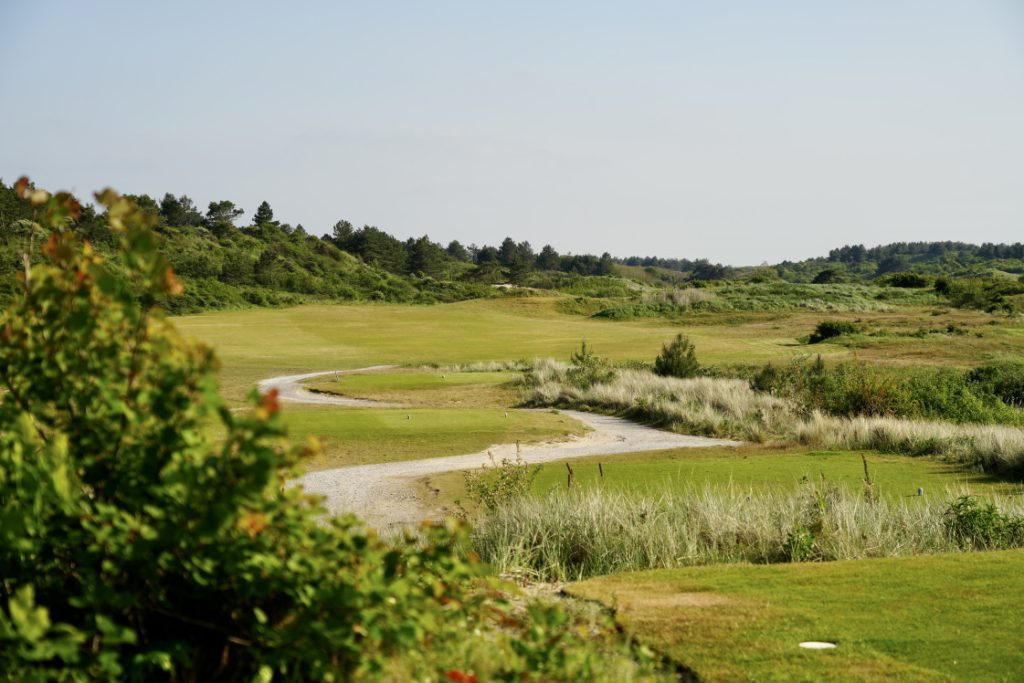Environmental stewardship is central to the ethos across all Resonance Golf Collection courses. The impact of pesticides on wildlife and groundwater, water scarcity and energy costs are daily considerations in striking a balance between sustainability and enduring playability.
The ecological initiatives undertaken at Golf du Touquet.
Golf du Touquet has been deeply committed for several years already to ecological transition, with every action on the course carefully considered to ensure respect for the natural resources and biodiversity that surround us.
The team focuses its work around three pillars that constitute the fundamentals of responsible course management:
- Water management
- Preserving biodiversity
- Controlled use of products
1. Water management
Even though we’re not in a very drought-prone area, our water usage is very reasonable. The water we use comes from groundwater catchment points. We pump from about thirty meters underground. This water is then stored on “La Mer” course, in a buffer basin covering 2,200 square meters with an average depth of around three meters.
It’s been almost three years since we started overhauling our irrigation system extensively. The old network was nearly 30 years old and some PVC pipe joints were no longer watertight… We took the opportunity to redo the entire sprinkler layout based on our experience of the site and the intrinsic philosophy of the courses. “La Mer” course for example has a strong links spirit, so it’s not an issue for it to yellow in summer.
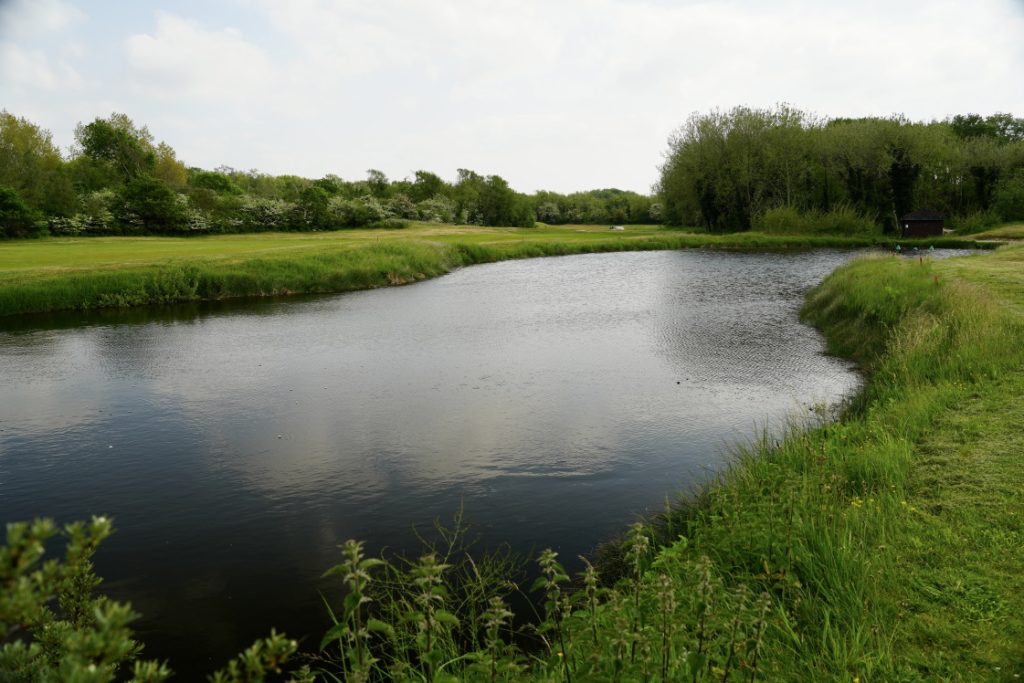
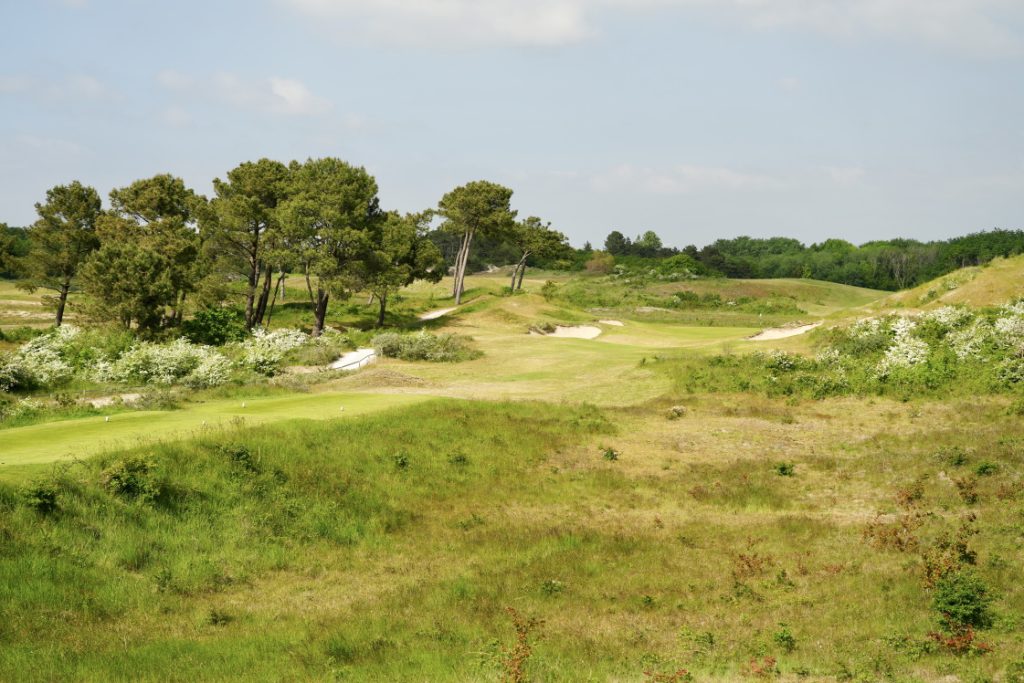
For some years now we’ve been actively working to improve our sprinkler layout. Previously we had a central line of sprinklers on the fairways that got everything wet all over the place all night long. Now the sprinklers are divided into sectors and mainly around the edges of fairways. They no longer water the rough, just the fairways and a very small overlap into the first cut.
On all three courses, our irrigation system is integrated. Each solenoid valve has its own address allowing targeted, precise triggering. The whole system is linked to integrated irrigation software that programs each sprinkler’s runtimes. We can even trigger each sprinkler on demand via an app, if needed.
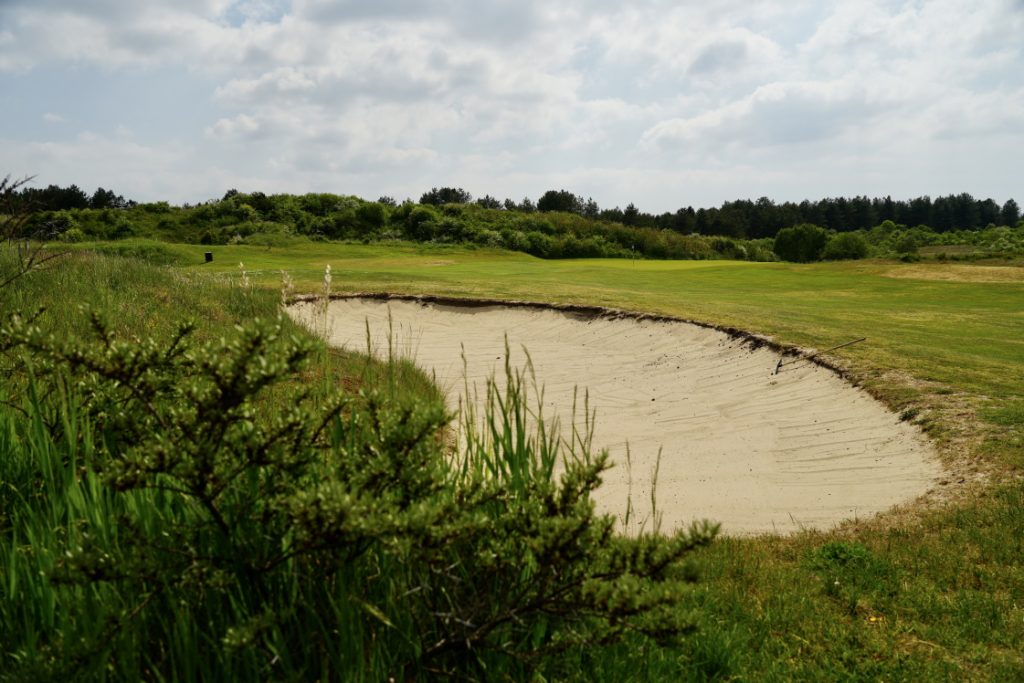
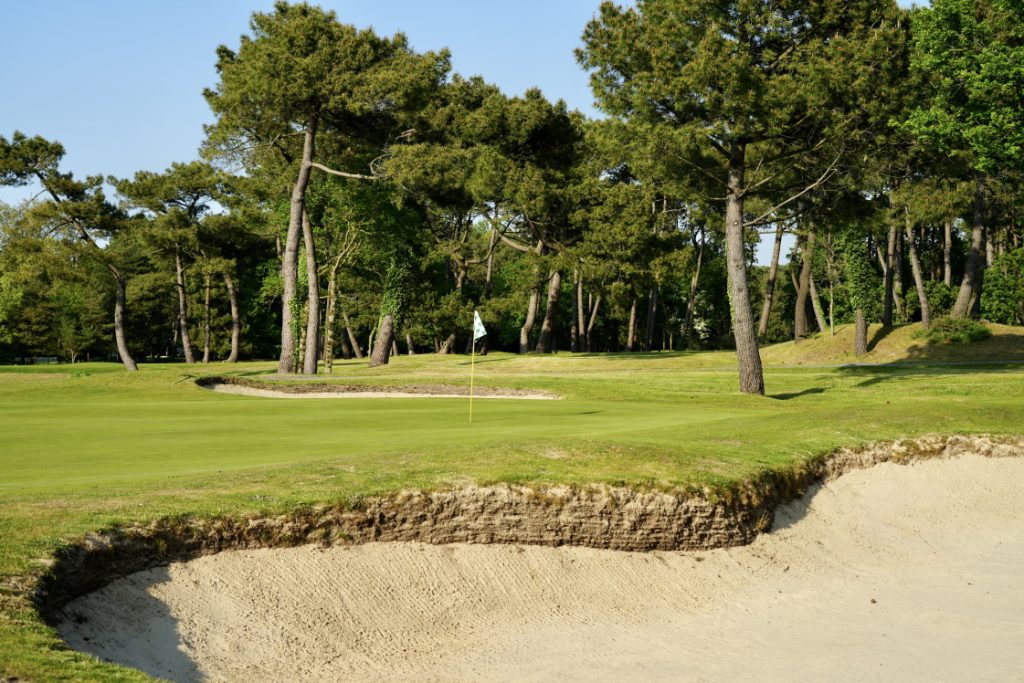
We use a soil moisture probe to measure the moisture content daily, especially on greens. The goal is not only to keep the plant alive, but also to encourage the grasses we want to establish. For example on greens, we absolutely want to get rid of poa annua. We know it likes water and fertilizer, so we’ll try to maintain, thanks to our probes, the lowest possible moisture content so that fescue will naturally take over. Of course, despite the very advanced software, it’s not an exact science. In some areas the soil can be a bit more hydrophobic, in others the wind will be stronger… That’s where experience and almost daily adjustments make the difference to be as efficient as possible with these living soils.
2. Biodiversity preservation
There are 20 of us gardeners at the golf club and we’re all very attuned to the environment we work on every day. On a 300 hectare property, only 50 hectares are dedicated to the three courses. The rest is dunes, forests, extremely rich ecosystems – there’s life everywhere on the site. So it’s all the more important to show that we work in harmony with, not against, this life.
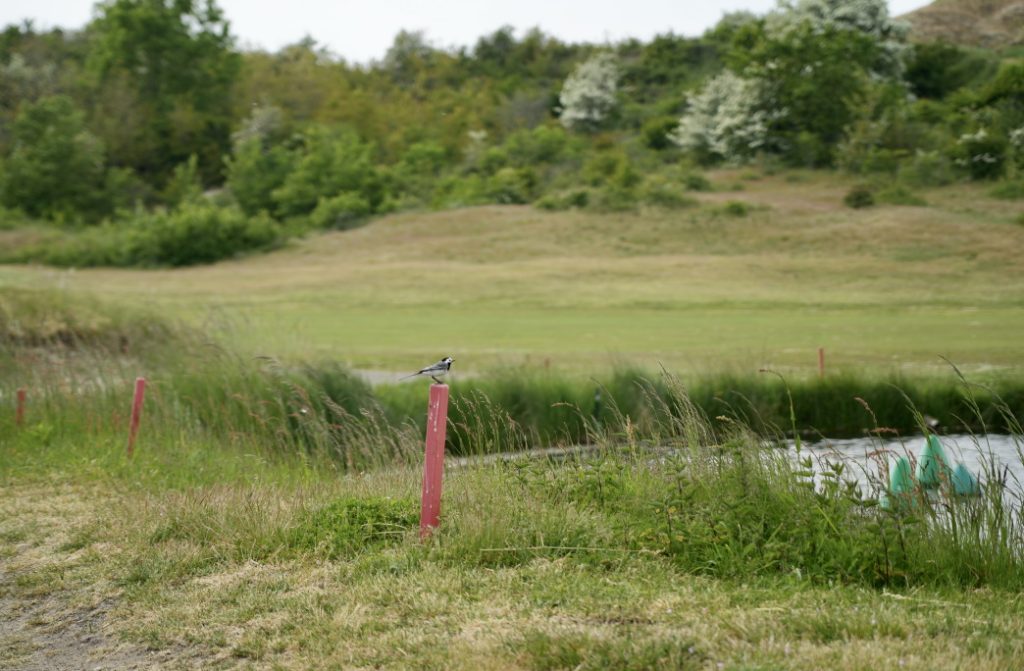
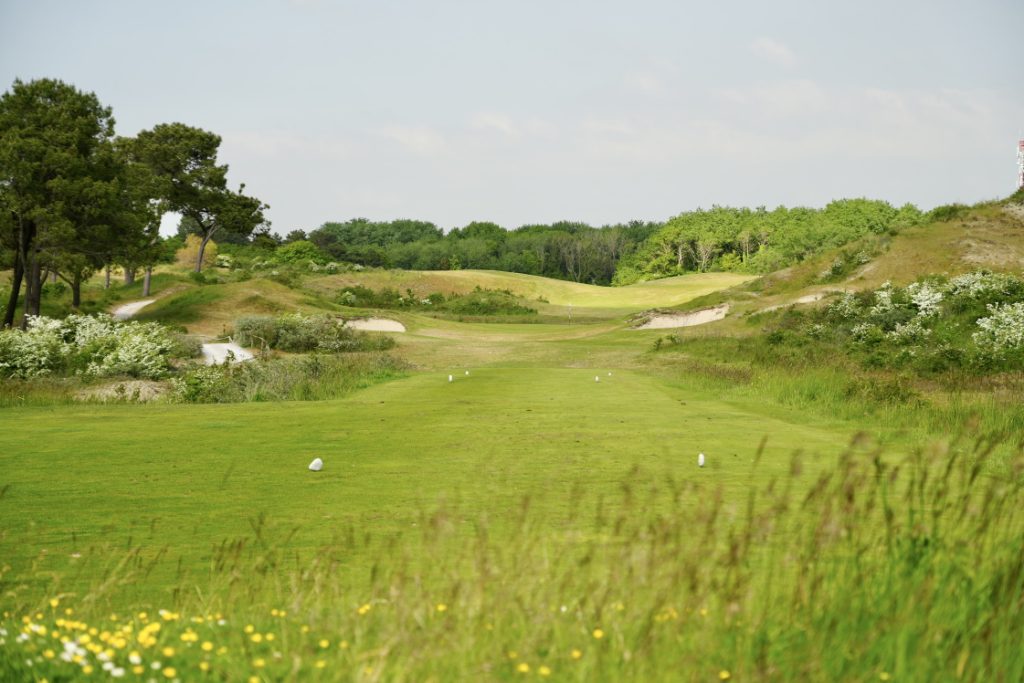
The really positive side of the label is that it helps us better identify all the species living on the golf course. For example, there are many snakes, wild orchids, frogs and more… It pushes us to think differently and sometimes re-examine our ways of working. But to be fully transparent, we didn’t need a label to realize the wealth of biodiversity our courses hold. We witness it daily and already had a very good perception of that biodiversity even before the studies. Personally, I still marvel today at certain plants, like the evening primroses or sea lyme grass native to the region.
3. The controlled use of products
There are two key aspects to consider when talking about stopping the use of phytosanitary products. First, we need to modify our maintenance practices, which we’ve been doing for years by performing a huge number of mechanical operations. But we also need to communicate that zero phytos will result in a different standard of quality on golf courses. Because you can maintain a course without any products, but it will require a higher degree of tolerance from players. For example, it will be harder to have fairways free of daisies. Of course we’re finding other methods than using selective products, with a harrow we run over the fairways to get a very consistent finish, but it won’t be as perfect as with a product.
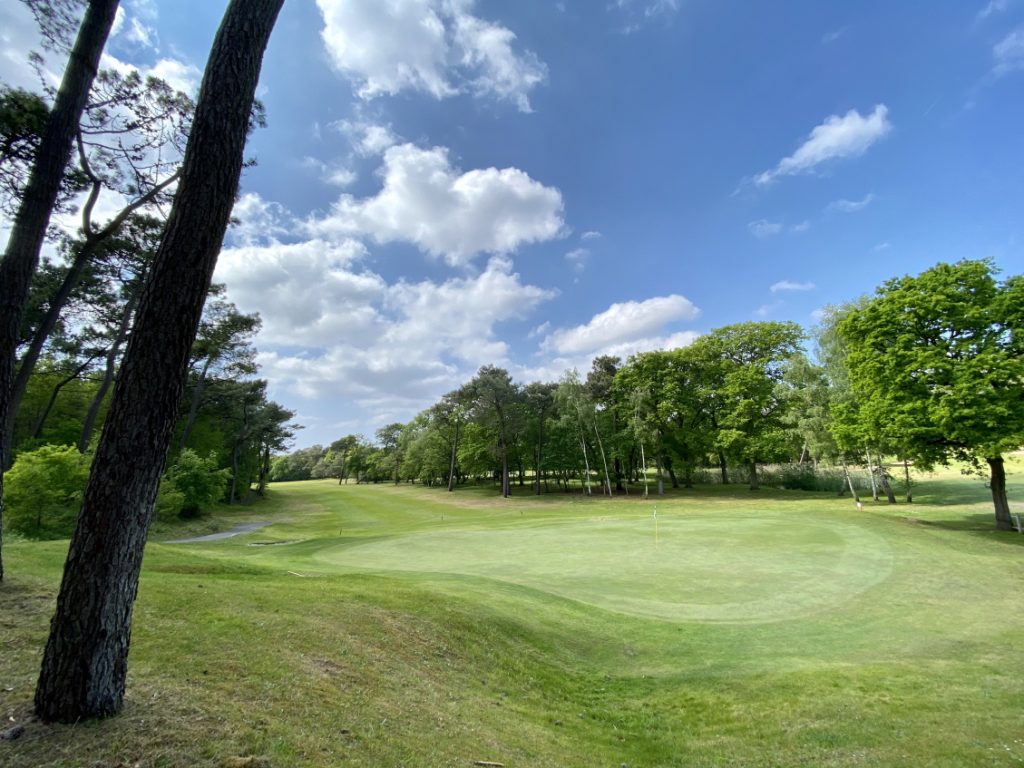
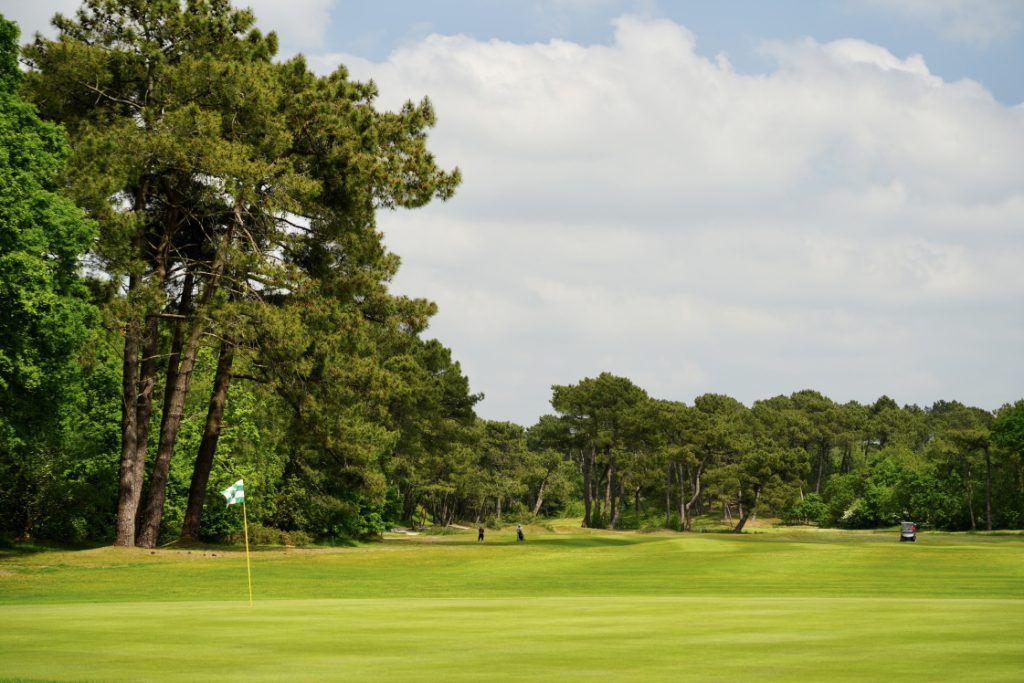
Greens will also necessarily have a different look because we won’t be able to mow them very low. They can stay firm thanks to all the mechanical operations we perform – aerations, topdressing, everything that promotes water penetration and gas exchange into the subsurface. When you aerate soil you allow it to function, you encourage its life and evolution. But if we have to moderate water and fertilizer inputs, we also have to moderate mowing heights. Because offering greens mowed at 3 mm without any fungicides, it’s impossible! On our greens, we regularly get up to 5.5 mm, which is high. It’s also thanks to this cutting height that we encourage fescue, which requires less water and inputs, and that we obtain consistent greens quality all year round.
Interview with Charles Debruyne, Golf du Touquet Manager
Biodiversity label
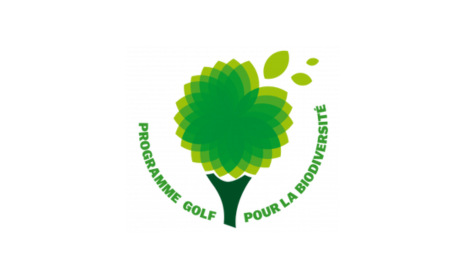
The label will allow us to communicate with our club members and other players, explaining our overall maintenance approach. It’s a way to truly inform them, because our maintenance policy has been the same for a good ten years now.
It’s all the more interesting because many of them play in Spain, Portugal or Morocco on courses that are over-fertilized, manicured and consequently very green… We sometimes have to deal with negative feedback that the course isn’t green enough or doesn’t have that famous crisscross mowing pattern seen on TV… There is an important awareness to raise: a golf course shouldn’t be entirely green. In our DNA, especially on “La Mer” course, a golf course in summer is not green. The label will allow us to put the entire maintenance policy in perspective and it’s also important for the grounds staff who see these practices are moving in the right direction.

